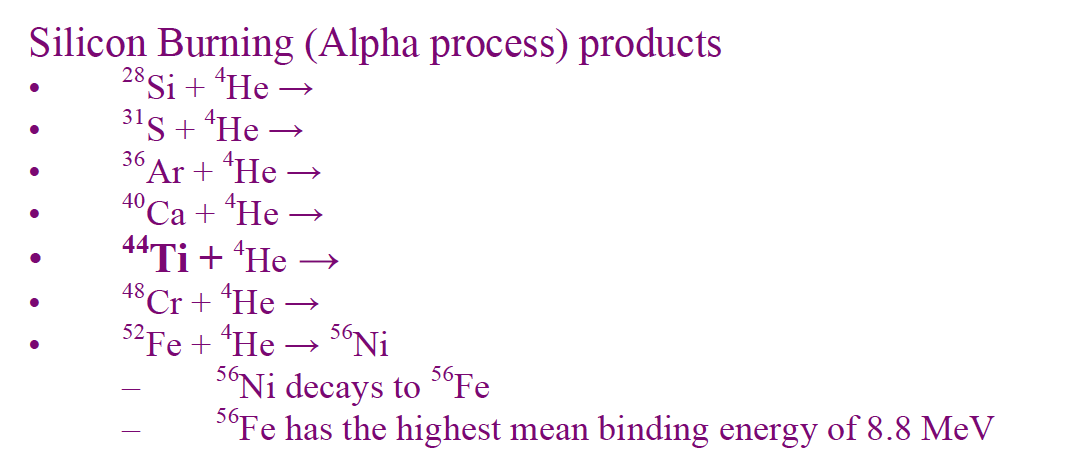
Supernova Remnant 1987a as imaged by the James Webb Space Telescope. This annotated image includes a legend, identifying what infrared wavelengths were used as well as the orientation. Filters: F150W: 1.5 microns, F164N: 1.64 microns, F200W: 2.0 microns, F322N: 3.22 microns, F405N: 4.05 microns and F444W: 4.44 microns.
Supernova 1987a was the closest supernova to be observed since Kepler’s supernova in 1604. It was one of the first objects observed with the newly deployed Hubble Space Telescope in 1991 and thus, the first -and closest supernova- to be observed with a modern observing platform. Although it is named and designated according to the naming conventions for supernovae, its light had been traveling for 168,000 years from the Large Magellanic Cloud, a smaller, satellite galaxy to the Milky Way.
Using PixInsight and other image-editing software, we combined a 2006 HST ACS image of SN1987a with the recently released JWST image of the same to produce an animated composite. The foot of this article contains that image (with download options), clearly illustrating the evolution of the supernova remnant over the intervening 17 years since the Hubble Optical light image was obtained and published in 2006.
History of the Progenitor Star Sanduleak -69º202
SN1987a was a Type-II core-collapse supernova. As suggested by the name, such an event is precipitated by the internal (core) collapse of a high-mass star, a star generally above 8 solar masses. The star’s rather unique name derives from its placement in Nicholas Sanduleak‘s catalog of stars of the Magellanic Clouds, satellite galaxies to the Milky Way. This star’s final classification (before its spectacular demise) was as a B3 Blue Supergiant, not unlike the star Deneb, an A2 blue-white supergiant. Both stars are of a comparable mass above 16 solar, with Sanduleak -69º202 upwards of 20 solar, both with luminosities exceeding 100,000 solar and radii also exceeding 100 solar. Like the progenitor of SN1987a, Deneb will soon end it’s short, 10-million year life in the same manner as Sanduleak -69º202.
The Morgan-Keenen Spectral Classification system begins with M-class stars as the smallest and coolest and ends with O-class stars as the hottest and most luminous. In a word, luminosity or the total energy output of a star increases as the 4th power of the mass; thus, a 2-solar mass star is 16x more luminous than the sun. With the behemoths described above, you can get a sense of just how powerful they really are.
The final B-class rating of Sanduleak -69º202 would suggest a higher luminosity and thus, a higher mass. It is important to note that as a star evolves (depletes its hydrogen fuel) and begins helium burning, it expands and cools. As it does so, its spectral “color” gets “cooler”, it goes from blue or blue-white to white, yellow-white, etc. For Sanduleak -69º202, this would suggest a higher “Main Sequence” classification as an O-class (O7 or O9) star. O-class stars are the highest-mass and most luminous of all main sequence stars.
Evolution of High-Mass stars
Consistent with the late-stage evolution of these high-mass stars is their increasingly powerful stellar wind (streams of charged particles at ultra-high velocities). At some point, these powerful stellar winds will begin to push off the star’s outer layers of hydrogen. Evidence of this expanding shell of hydrogen gas is observed as the supernova’s blast wave “lights up” the expanding gas bubble surrounding the supernova remnant.
What we observe in SN1987a is the supernova’s shock wave propagating out through this expanding hydrogen envelope of what used to be Sanduleak -69º202’s outer layers. Based on the current size of the circumstellar ring of ~ 1.5 light years, this ejection process began about 20,000 – 30,000 years earlier.
Study of SN1987a
In 2010 we conducted a study of the supernova remnant SN1987a. Entitled “Integrated Multi-Wavelength Analysis of SNR Sn1987a”, the
purpose of this project is to demonstrate that a more complete understanding of the dynamics and interplay of the object under study can be obtained by simultaneously studying the same object in multiple wavelength regions of the spectrum, radiation whose detection and analysis is accomplished by radically differing methods. By invoking a multi-wavelength regime paradigm, we obtain a more complete “picture”, a “Grand View”, if you will, of the object under study. When applied in a general sense, we obtain a more complete view of the universe.
We completed a study, examining the supernova remnant (remnant because the “supernova” phase of the star’s evolution was a brief moment in time, what remains now is a remnant), in 6 wavelength regimes of the Electromagnetic spectrum: Gamma Rays, X-Rays, Ultraviolet, Visible, Infrared and Radio. We will include excerpts from that study as appropriate here as we present new imagery from JWST.
Infrared
All of the effects we’ve chronicled thus far were for relatively high energy processes and events. We will now analyze the near Infrared (~ 2μm) complement to our higher energy results.
NICMOS
As we’ve shown, Sn1987a exhibits a strong correlation, over time, between luminosity, flux density and morphology. For example, our X-Ray analysis demonstrated that as the high-speed blast wave plows into the cool hydrogen, the X-Ray flux increases with a corresponding growth in circumstellar ring radius: the morphology changed along with a correlated luminosity increase. Other effects include the UV fluorescence and excitation of the nucleo-synthetic byproducts in and around the ring, among others. We will now demonstrate that these effects have an analog in the Infrared wavelength realm. Using HST NICMOS data spanning 7 years, we demonstrate the progression in IR luminosity and the wavelength-dependant morphological evolution of Sn1987a as the shock-front progresses through the gas ring threshold.
In these early 2.1 micron infrared images, we observe the progression of the supernova’s shock front as it propagates out through the expanding shell of hydrogen gas that was shed by the supernova’s progenitor star, Sanduleak -69º202. These images were obtained with HST’s now decommissioned Near Infrared Camera, Multi-Object Spectrometer (NICMOS). Titled as the Onset of Titanic Collision Lights Up Supernova Ring the ring-brightening was featured in a February 16, 2000 article at the Space Telescope Science Institute.

Optical Light Image of SN1987a

Optical image obtained by HST ACS during December 2006. Image credit: P. Challis and R. Kirshner (Harvard-Smithsonian Center for Astrophysics); NASA/HST-ACS
From our study
This fully integrated, visible-light image of Sn1987a shows the intricate detail of the evolving circumstellar ring, the glowing, bi-polar outer rings of gas and the odd, keyhole-shaped feature almost bisecting the short axis of the circumstellar ring. Further study and research will be necessary to determine if this feature is concealing a stellar remnant. Currently there is no evidence that any such remnant exists. Conspicuous is the “Ring of Pearls Necklace” appearance of the circumstellar ring. These bright “spots” have become dramatically brighter over the past 10 years as the 12,770 Km/sec shock front slams into the cool gas. The “fireworks” are expected to brighten and escalate in the coming years as the shock front becomes fully integrated into the circumstellar ring, imparting its full measure of kinetic energy into the Hydrogen gas.
From this excerpt, “The ‘fireworks’ are expected to brighten and escalate in the coming years” is noteworthy as “the coming years” are now with JWST! Noteworthy also in this optical light image is the center “Keyhole”, the star’s core material ejected during the supernova explosion. This material is rich in heavy metals (iron, cobalt and nickel), the products of late-stage stellar nucleosynthesis. We will come back to this center keyhole below in the new JWST imagery.
Present Day and JWST
Using Pixinsight and other high-end image-processing software, we’ve measured the expansion of the circumstellar ring over the intervening 17 years since the optical-light image above was obtained by Hubble’s Advanced Camera for Surveys (ACS).
At a scale of 132 pixels/ light year, we determine an increase of 5 pixels along the NW axis and an increase of 11 pixels along the NE axis of the circumstellar ring. Over the intervening 17 years since, this corresponds to an increase of 0.04 ly or 2383 AU at an average velocity of 666 km/sec (0.002 c) along the NW axis. Along the NE axis, we calculate an increase of 0.08 ly or 5242 AU at an average velocity of 1,466 km/sec (0.005 c or 12% of the velocity determined for the 2007 image). These increases were net diametric increases, not radial.
Compared to the nominal velocity of 12,770 Km/sec (4% the speed of light) determined for the 2007 image, the blast wave has slowed down in real time as it plows through the gas, inexorably losing energy as it does so. It’s important to note that 2007 was the 20th anniversary of the initial supernova event, and the average computed velocities are now much slower than they were then.
Silicon Burning Cycle
As the 24-hour silicon burning cycle concludes in the core of these stars, as the clock runs out, as the bell tolls for the star, all physical support for the star’s outer core and layers above instantly vanishes. As it does so, the gravitational potential energy of the outer core and these layers above accelerates it towards the inner-core in “free-fall” at 20% the speed of light! If we assume a perfect “rebound” off the degenerate nickel-iron inner core, the outbound material and shock wave now propagates out at 20% the speed of light! This will be the “Breakout” speed for the supernova. The alpha-particle produced byproducs include the following:
Modeling
We can now more accurately model the near-space environment of the supernova remnant and refine our models by observing the propagation of the blast wave over time and how it slows down as it propagates outward. If we take 0.2 c as an initial breakout speed for the shock front, we can then compare that to:
- 12,700 km/sec (0.04 c) computed in 2007 after 20 years, and
- now with this latest observation by JWST:
An average velocity of 666 km/sec (0.002 c) NW and 1,466 km/sec (0.005 c) NE.
The outbound blast wave has thus slowed down considerably since its breakout, observed on February 24, 1987.

Measured shock front velocity (km/sec) vs. time (in days) since breakout. The 3 data points are plotted against a best-fit decaying exponential. The expanding shock front is rapidly losing energy as it plows through the circumstellar disk of gas. Based on this plot, the expansion will stop in the next 3 – 5 years.

Animation illustrating the evolution of the near-space environment of supernova remnant 1987a in optical (HST) and Infrared (JWST). The outbound shock front has slowed down considerably, while the inner “Keyhole” has increased in size, morphologically evolving to include much more detail. Image credit: T. Madigan for Astronomy for Change and NASA/JPL/JWST/HST/GSFC.
Full resolution download: 1200×938 (6 mb) animated gif. The image is in the public domain. Fair-use policy applies: no restrictions for non-commercial, educational use, citations requested.
The outbound shock front has slowed down considerably, while the inner “Keyhole” has increased in size, morphologically evolving to include much more detail. Also notable in the JWST image is the extent of the expanding hydrogen bubble surrounding the remnant. This later detail is an infrared aspect only and illustrates the necessity of multi-waveband regime observations to more fully understand an object of interest, the scope of its dynamics and interplay with its near-space environment. This idea culminated with NASA’s 2009 “Great Observatories Program”.
Many are familiar with the famous Balmer (visible) series of Hydrogen, even the Lyman series in the UV. Few are familiar, however, with the Paschen, Brackett and Pfund series of Infrared hydrogen lines.
Illustration from a 2006 study linking Supernovae to their Remnants, showing the  near-space morphology of the remnant and the expanding circumstellar disk. The outer extremities of the expanding “hourglass” structure are revealed in the JWST image using the 3.2, 4.05 (Brackett α at 4.05 μ) and 4.44 μ NirCam filters. It is no accident that these specific wavebands were chosen when designing JWST and deployed in this observation.
near-space morphology of the remnant and the expanding circumstellar disk. The outer extremities of the expanding “hourglass” structure are revealed in the JWST image using the 3.2, 4.05 (Brackett α at 4.05 μ) and 4.44 μ NirCam filters. It is no accident that these specific wavebands were chosen when designing JWST and deployed in this observation.
Although we observed the outer extent of the expanding, hour-glass shaped shell of gas (the “outer rings”) in the optical regime, the intricate detail and structure of that shell would have been otherwise invisible without the Brackett α, 4.05 μ image.
Center Keyhole (Ejecta)
“Color” is an entirely subjective aspect to any observation. Our brains assign “color” to different wavelengths in the “visible” spectrum. We’ve evolved on a planet whose star emits most of its energy in the “yellow-green” part of that spectrum. We thus, “see” the world accordingly.
Similarly, when processing JWST images, “colors” are assigned according to wavelength, shorter wavelengths are assinged “bluer”, shorter wavelength “colors”, conversely, longer wavelengths are assigned increasingly “red” colors according to their wavelength. We observe the substantially detailed evolution and expansion of the remnant’s central ejecta, described as the “Keyhole” (likeness to such a shape). This ejecta, much of which was produced in the final burning cycle, is rich in heavy metals (see “Silicon Burning”, above). This ejecta, labeled as such in the featured image, contains these byproducts. One of them, singly ionized Iron (Fe ii), has an infrared emission line at 1.644 μm, one of the filter selections available and thus, integrated into the JWST image. This ejecta is presented as a “teal” colored feature and labeled “ejecta”. Although this region is cited for its iron emission (and over 1.5 solar mass worth of iron was produced), other byproducts such as 44Ti, 56Ni and 56Co are are also present.
Why was SN1987a’s Light Curve Suppressed and Temporally Extended And Other Questions
There are many questions still open about this enigmatic “New Star” and are thus beyond the scope of this single article. They will be discussed in the near future but, for now, it is worth pondering the following:
- The progenitor star, Sanduleak -69202, was a B3 Blue Supergiant, highly uncharacteristic for the near-terminal end-state of a Type-II progenitor star. These stars are typically Red Supergiants, suggesting a cooler photosphere, unlike Sk-69202, a blue supergiant with a hot photosphere. In reading though a number of papers:
- it is not inconcevalbe that the final state of Sk-69202 was the result of a binary merger, not unlike the “blue stragglers” observed in many globular clusters. The blue supergiant WR-104, 8,400 ly distant in the direction of the galactic center in Sagittatius, is a luminous Wolf-Rayet star and is a member of such a system – it’s actually a trinary system!
- Sanduleak -69202 may have had an unusually dense, high-mass hydrogen envelope (what we now see expanding). This 1989 paper makes a compelling argument for this on page 9 as an outcome. High-mass loss in high-mass stellar evolution drives the star to the blue, while intermediate mass loss drives it to the red. Supporting this claim is the uncharacteristically low peak-light for SN1987a. I have always held this view, that the substantial loss of mechanical energy by the emerging blast wave, lost plowing through a dense, high-mass hydrogen envelope, was the cause for the substantially diminished peak-light of SN1987a.
- Then there are heavy-metals and light radionuclides such as 44Ti, 56Ni and 56Co present (see Silicon Burning cycle, above), with clumps of Fe/Co/Ni containing ∼1% of the mass of the supernova envelope, absorbing most of the energy released by56Ni and 56Co decay. Radioactive decay accounts for much of the post-blast luminosity and light-curve of any supernova.
- The possible remnant of the stellar core as a neutron star, black hole or other “compact” object.
A quick, interactive web-based version of Stellarium is available here Tonight's Sky. When you launch the application, it defaults to north-facing and your location (on mobile and desktop).
Astronomy For Change: https://astronomyforchange.org
Did you enjoy this article or like what we do? Why not leave a tip or buy us a Coffee?
Follow Us On Twitter: https://twitter.com/astronomychange
Why not support us on Patreon: https://www.patreon.com/astronomyforchange
Imagination is more important than knowledge
![]()
An index of all articles can be found here.
If you enjoyed this article, please consider supporting us with a modest donation
or through a subscription on our Patreon Page
Membership at Astronomy for Change is Free!







